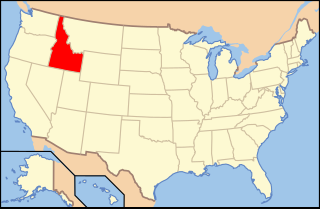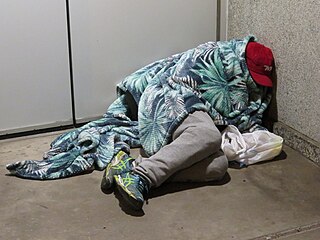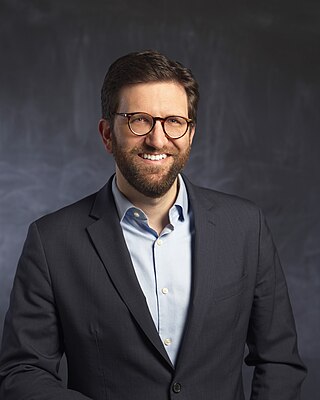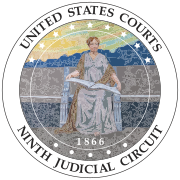Browder v. Gayle, 142 F. Supp. 707 (1956), was a case heard before a three-judge panel of the United States District Court for the Middle District of Alabama on Montgomery and Alabama state bus segregation laws. The panel consisted of Middle District of Alabama Judge Frank Minis Johnson, Northern District of Alabama Judge Seybourn Harris Lynne, and Fifth Circuit Court of Appeals Judge Richard Rives. The main plaintiffs in the case were Aurelia Browder, Claudette Colvin, Susie McDonald, and Mary Louise Smith. Jeanetta Reese had originally been a plaintiff in the case, but intimidation by segregationists caused her to withdraw in February. She falsely claimed she had not agreed to the lawsuit, which led to an unsuccessful attempt to disbar Fred Gray for supposedly improperly representing her.

Marsha Lee Berzon is a senior United States circuit judge of the United States Court of Appeals for the Ninth Circuit.
Proposition H was a local ordinance on the November 8, 2005 ballot in San Francisco, California, which gained national attention for its banning of most firearms within the city. The measure passed with a yes vote of 123,033 to a no vote of 89,856. The proposition was later struck down in court.

Skid Row is a neighborhood in Downtown Los Angeles. The area is officially known as Central City East.
District of Columbia v. Heller, 554 U.S. 570 (2008), is a landmark decision of the Supreme Court of the United States. It ruled that the Second Amendment to the U.S. Constitution protects an individual's right to keep and bear arms—unconnected with service in a militia—for traditionally lawful purposes such as self-defense within the home, and that the District of Columbia's handgun ban and requirement that lawfully owned rifles and shotguns be kept "unloaded and disassembled or bound by a trigger lock" violated this guarantee. It also stated that the right to bear arms is not unlimited and that certain restrictions on guns and gun ownership were permissible. It was the first Supreme Court case to decide whether the Second Amendment protects an individual right to keep and bear arms for self-defense or whether the right was only intended for state militias.
American Electric Power Company v. Connecticut, 564 U.S. 410 (2011), was a United States Supreme Court case in which the Court, in an 8–0 decision, held that corporations cannot be sued for greenhouse gas emissions (GHGs) under federal common law, primarily because the Clean Air Act (CAA) delegates the management of carbon dioxide and other GHG emissions to the Environmental Protection Agency (EPA). Brought to court in July 2004 in the Southern District of New York, this was the first global warming case based on a public nuisance claim.

Lesbian, gay, bisexual, and transgender (LGBT) persons in the U.S. state of Nebraska may face some legal challenges not experienced by non-LGBT residents. Same-sex sexual activity is legal in Nebraska, and same-sex marriage has been recognized since June 2015 as a result of Obergefell v. Hodges. The state prohibits discrimination on account of sexual orientation and gender identity in employment and housing following the U.S. Supreme Court's ruling in Bostock v. Clayton County and a subsequent decision of the Nebraska Equal Opportunity Commission. In addition, the state's largest city, Omaha, has enacted protections in public accommodations.

Lesbian, gay, bisexual and transgender (LGBT) people in the U.S. state of Idaho face some legal challenges not experienced by non-LGBT people. Same-sex sexual activity is legal in Idaho, and same-sex marriage has been legal in the state since October 2014. State statutes do not address discrimination based on sexual orientation and gender identity; however, the U.S. Supreme Court's ruling in Bostock v. Clayton County established that employment discrimination against LGBT people is illegal under federal law. A number of cities and counties provide further protections, namely in housing and public accommodations. A 2019 Public Religion Research Institute opinion poll showed that 71% of Idahoans supported anti-discrimination legislation protecting LGBT people, and a 2016 survey by the same pollster found majority support for same-sex marriage.
Clark v. Community for Creative Non-Violence, 468 U.S. 288 (1984), is a United States Supreme Court case with the National Park Service's regulation which specifically prohibited sleeping in Lafayette Park and the National Mall at issue. The Community for Creative Non-Violence (CCNV) group had planned to hold a demonstration on the National Mall and Lafayette Park where they would erect tent cities to raise awareness of the situation of the homeless. The group obtained the correct permits for a seven-day demonstration starting on the first day of winter. The Park Service however denied the request that participants be able to sleep in the tents. The CCNV challenged this regulation on the basis that it violated their First Amendment right.
Same-sex marriage has been legal in Tennessee since the U.S. Supreme Court's ruling in Obergefell v. Hodges on June 26, 2015. Governor Bill Haslam quickly announced that the state would abide by the court's decision, and same-sex couples began to marry in Tennessee. Previously, Tennessee had banned same-sex marriage both by statute and its State Constitution.
Same-sex marriage has been legal in Missouri since the U.S. Supreme Court's landmark ruling in Obergefell v. Hodges, which struck down state bans on marriages between two people of the same sex on June 26, 2015. Prior to the court ruling, the state recognized same-sex marriages from other jurisdictions pursuant to a state court ruling in October 2014, and certain jurisdictions of the state performed same-sex marriage despite a statewide ban.

Latta v. Otter is a case initiated in 2013 in U.S. federal court by plaintiffs seeking to prevent the state of Idaho from enforcing its ban on same-sex marriage. The plaintiffs won in U.S. District Court. The case was appealed to the Ninth Circuit Court of Appeals, which heard this together with two related cases–Jackson v. Abercrombie, and Sevcik v. Sandoval.

Homelessness in the United States has occurred to varying degrees across the country. The total number of homeless people in the United States fluctuates and constantly changes hence a comprehensive figure encompassing the entire nation is not issued since counts from independent shelter providers and statistics managed by the United States Department of Housing and Urban Development vary greatly. Federal HUD counts hover annually at around 500,000 people. Point-in-time counts are also vague measures of homeless populations and are not a precise and definitive indicator for the total number of cases, which may differ in both directions up or down. The most recent figure for the year 2019 that was given was at 567,715 individuals across the country that have experienced homelessness at a point in time during this period.

Homelessness is a growing problem in Colorado and is considered the most important social determinants of health. Homelessness is very difficult for many Coloradoans to escape due to the continuous increase in costs for housing in Colorado, along with mental health treatments and other factors. When people are forced to live without stable shelter, they are then exposed to a number of risk factors that affect physical and mental health. Although it is difficult to pin point any one cause of homelessness, there is a complicated combination of societal and individual causes.

The United States Department of Housing and Urban Development estimated that more than 181,399 people were experiencing homelessness in California in January 2023. This represents more than 27% of the homeless population of the United States even though California has slightly less than 12% of the country's total population, and is one of the highest per capita rates in the nation, with 0.46% of residents being homeless. More than two-thirds of homeless people in California are unsheltered, which is the highest percentage of any state in the United States. 49% of the unsheltered homeless people in the United States live in California: about 123,423 people, which is eight times as many as the state with the second highest total. Even those who are sheltered are so insecurely, with 90% of homeless adults in California reporting that they spent at least one night unsheltered in the past six months.

Joseph Tartakovsky is an American lawyer, writer, and historian, and the former Deputy Solicitor General of Nevada. Tartakovsky is presently an Assistant United States Attorney in the United States Attorney's Office for the Northern District of California in San Francisco where he prosecutes criminal cases.
New York State Rifle & Pistol Association, Inc. v. City of New York, New York, 590 U.S. ___ (2020), abbreviated NYSRPA v. NYC and also known as NYSRPA I to distinguish it from the subsequent case, was a case addressing whether the gun ownership laws of New York City, which restrict the transport of a licensed firearm out of one's home, violated the Second Amendment to the United States Constitution, the U.S. Constitution's Commerce Clause, and the right to travel. It was the first major gun-related case that the Supreme Court had accepted for review in nearly ten years, after District of Columbia v. Heller (2008) and McDonald v. City of Chicago (2010). After the Supreme Court agreed to hear the case, New York City and New York state amended its laws to allay the challenged provision. In a per curiam decision in April 2020, the Supreme Court determined that the case was moot, vacating and remanding the case to lower courts to determine "whether petitioners may still add a claim for damages in this lawsuit with respect to New York City's old rule".
Arlington County Board v. Richards, 434 U.S. 5 (1977), is a United States Supreme Court decision on the application of the Equal Protection Clause of the Fourteenth Amendment to the Constitution to municipal parking restrictions. In a unanimous per curiam opinion, the Court held that a residential zoned parking system requiring permits for daytime parking in the Aurora Highlands neighborhood of Arlington County, Virginia, with those permits limited to residents, their guests and those who came to their homes for business purposes had a rational basis and was thus constitutional. Its decision overturned the Virginia Supreme Court.
41.18, also known as Los Angeles Municipal Code, Section 41.18(d), is an ordinance in Los Angeles prohibiting by law that there will be no "sitting, lying, or sleeping, or ... storing, using, maintaining, or placing personal property in the public right-of-way." Sec. 41.18(d) dictates the distance any person must be from places such as: utilizable driveways and loading docks; operational or utilizable buildings; any permitted event; bike lanes and bike paths; parks, schools, libraries, or otherwise designated as a "sensitive use" facility; freeway ramp, tunnel, bridge, pedestrian bridge, subway, wash, spreading ground, or active railway; or, anywhere near of a facility opened after January 1, 2018, that provides shelter, safe sleeping, safe parking to houseless persons or that serves as a navigation center.









